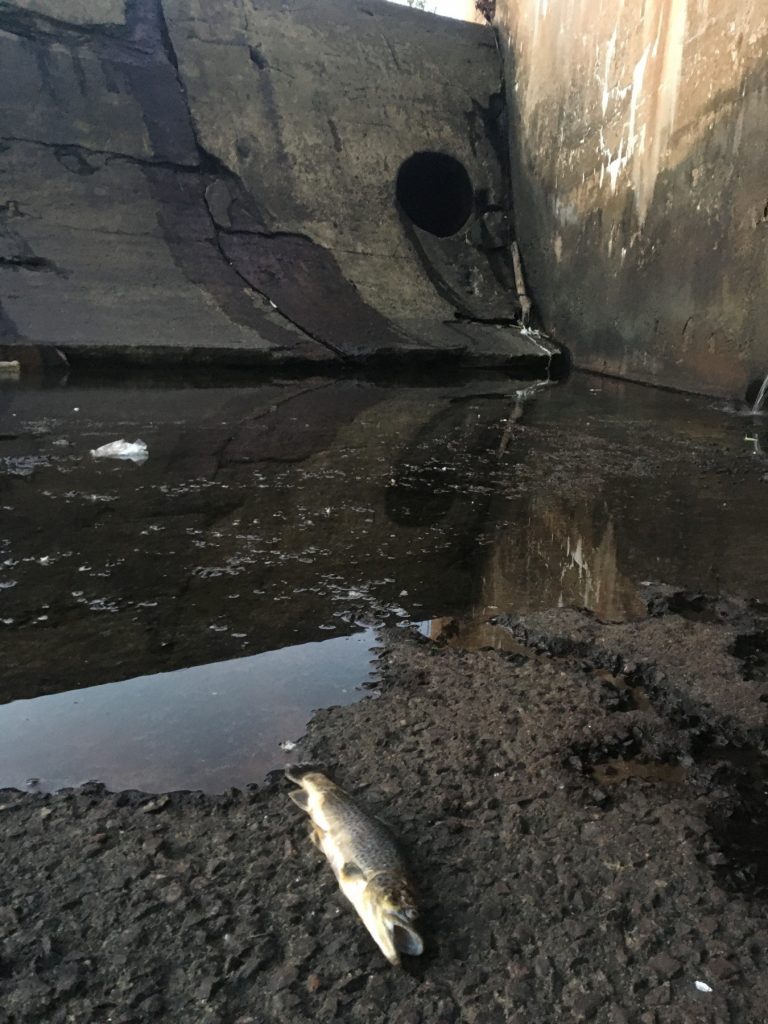Seymour, CT – Extensive photographic and video documentation gathered this spring by environmental organizations Save the Sound and the Naugatuck River Revival Group (NRRG), coupled with annual fish counts from the Connecticut Department of Energy and Environmental Protection (CT DEEP), have demonstrated that sea-run migratory fish trying to ascend the Naugatuck River to spawn were once again stopped by Kinneytown Dam.1,2
The dam, owned by Hydroland and located in Seymour, Connecticut, is the first barrier to fish passage on the Naugatuck River and blocks access to 32 miles of high quality, free-flowing aquatic habitat for migratory species making their way upriver from Long Island Sound to their historical spawning grounds. The sea-run fish that should be passing the dam in large numbers each spring include American shad, blueback herring, and alewife—all of which CT DEEP has identified as targets for restoration in the Naugatuck. On July 12, Save the Sound and NRRG submitted extensive documentation of the fish passage failure at Kinneytown Dam to the Federal Energy Regulatory Commission (FERC), the federal agency charged with overseeing the operation of hydropower dams.

Annual fish count data collected by CT DEEP confirms the conclusion of the two environmental organizations: the 2021 spring fish run failed once again at Kinneytown Dam. The fish counts, obtained using a video camera installed at the entrance of the dam’s fish ladder, show very few migratory fish actually making their way upstream. Instead of locating and passing through the ladder, the fish are attempting to scale the broad face of the dam, drawn there by the water flowing across the spillway as a result of improper maintenance and operation of the hydropower facility. Once at the base of the dam, these fish are stranded, eaten by predators, or are otherwise unable to migrate upstream.
In similar legal filings made last year to FERC, Save the Sound and NRRG demonstrated that upstream fish passage had completely failed in 2020, and that the restoration of the Naugatuck River has been severely hindered by conditions at the site for at least a decade.3 At the recommendation of federal and state resource agencies (US Fish and Wildlife Service and CT DEEP), FERC required Hydroland Corporation, the current owner of Kinneytown Dam, to make immediate, short-term efforts to try to improve these results for the 2021 spring fish run.
Hydroland made none of the required changes.
FERC and the resource agencies are now evaluating the larger, long-term changes that are required to successfully restore native fish to the Naugatuck River.
Save the Sound and the NRRG are members of the Naugatuck River Restoration Coalition, which includes community groups, environmental NGOs, and local municipalities. The coalition has led an online petition calling for the restoration of fish passage at Kinneytown Dam.
The photographic and video evidence submitted to FERC by Save the Sound and the NRRG can be found here:
- Kinneytown Dam Observations: May-June 2021 – YouTube
- Save the Sound – NRRG Filing 07-12-21
- Save the Sound NRRG Comments 11-30-20
Read more about efforts to restore fish passage at Kinneytown Dam here.
